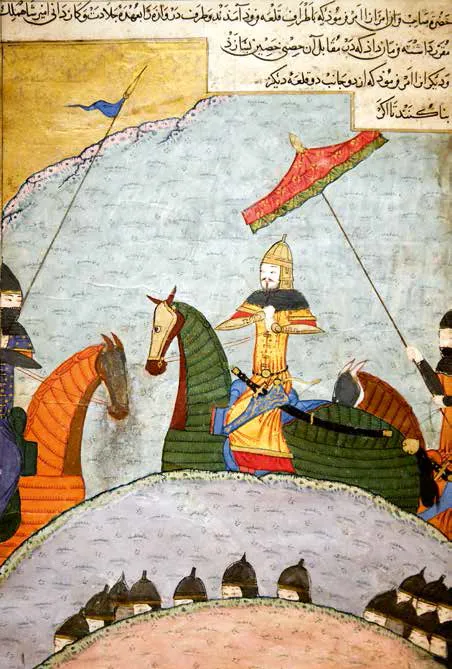Amir Timur (1336–1405), also known as Tamerlane, was a prominent statesman and military leader of the medieval East. His image was systematically immortalized in the portrait miniatures of the region.
By the late 15th century, during the Timurid Renaissance, art schools in Samarkand and Herat actively developed the genre of individual portraiture.
In surviving miniatures, Amir Timur is depicted as the ideal ruler: wise, just, and strategically astute. Notably, most works canonize his appearance—stern gaze, robust figure, and opulent attire adorned with symbolic embroidery such as the moon, sun, and emblems of power. These elements align with the principles of "mirrors for princes" a medieval genre of advice literature for monarchs.
Scholars, including A. A. Semyonov and E. B. Bertels, have noted that Timur's portrait miniatures served not only as artistic expressions but also as instruments for legitimizing the authority of his Timurid successors, such as Shah Rukh and Ulugh Beg. References to the earliest known miniatures date back to the mid-15th century, particularly from the workshops of Herat.
Symbolism played a crucial role: Timur's portraits often featured scenes of triumph, assemblies of scholars, and motifs of universal harmony, reflecting the concept of the "perfect state" (Dawlat-i mukammal).
Thus, the emergence of the portrait genre in Central Asian culture is inextricably linked to the figure of Amir Timur, laying the foundation for a tradition of individualized depictions of great personalities.
WOSCU Press Service

Behzad, miniature for "Zafarnama" (Shiraz, 1435-1436)
Metropolitan Museum, New York
